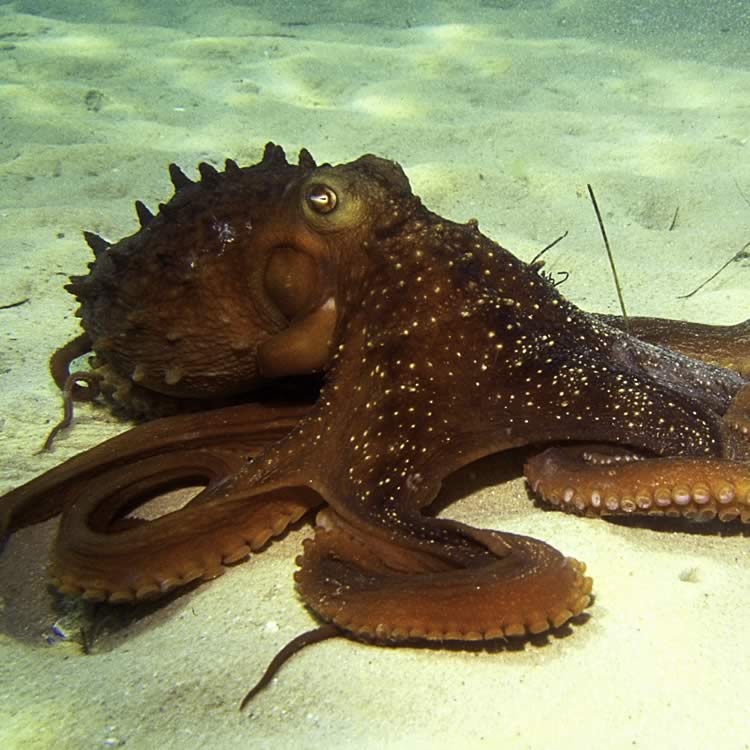Maori octopus

Community type
Habitat type
Rocky reefs, kelp beds and inter-tidal zone
The largest octopus in southern Australia, Macroctopus maorum can grow to an arm span of 3 m. They inhabit shallow rocky reefs and kelp forests down to 550 m, but also move out onto exposed sandy sediments and seagrass beds.
All octopus are highly intelligent and excellent predators with good vision but are entirely deaf. Octopus fool crustaceans and molluscs into thinking the tips of their wriggling tentacles are edible worms, then snare their prey with their tentacles armed with tiny suction cups. They are also known to attack and eat other octopus. Octopus belong to the Cephalopod family, pronounced ‘cef-a-lo-pod’, including squid, cuttlefish and nautilus. Octopus have entirely soft bodies, but their mouth parts are hard, and have two horny plates. The plates come together at the mouth in a sharp and hard beak, much like that of a parrot.
Octopus may change colour to provide camouflage against their backdrop, and for protection they can eject ink to blind their attackers. Many female Maori octopus undergo a long fast during breeding, as they do not eat until their eggs hatch, which takes around 50 days.
